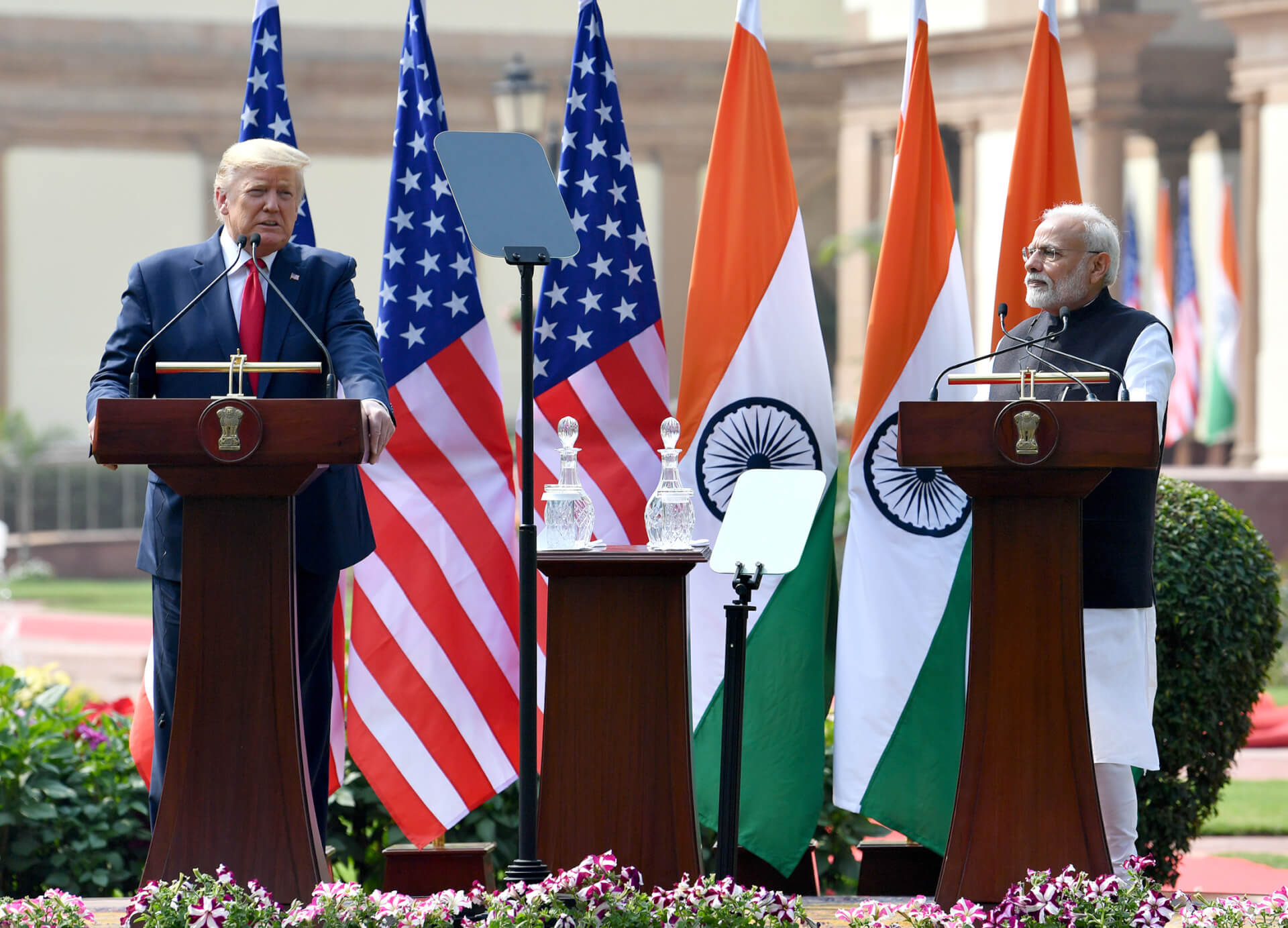After the conclusion of US President Donald Trump's first state visit to India, both countries laid out a broad set of markers of continuity and progress in their bilateral relationship.
On the strategic front, both leaders vowed to elevate ties by turning the existing "strategic partnership" into a "comprehensive global strategic partnership." Trump noted the importance of a strong and capable India for a stable and peaceful Indo-Pacific, reaffirming American support for the transfer of advanced and critical military technology to India. Trump's growing willingness to sell "ultra-modern defense equipment and platforms" to India came as the two concluded a $3 billion defence deal, wherein India will purchase the MH-60R naval and AH-64E Apache helicopters, described by Trump as the "finest in the world".
New Delhi and Washington also pledged to their "deepen defence and security partnership" in domains such as the maritime and space, with a particular emphasis on information sharing and greater cooperation between personnel. Further, fresh impetus was placed on the co-production and development of defense hardware through a partnership between the defense industries of the two nations. Nevertheless, several defence cooperation initiatives, including the Basic Exchange and Cooperation Agreement remain unfinalized.
Concerning global cooperation and leadership, the US reaffirmed its support to India for a permanent UNSC seat and backed "India's entry to the Nuclear Suppliers Group without any delay".
After his visit to Motera Stadium in Ahemdabad and the Taj Mahal in Agra, Trump went on to explain how his visit had been "very productive" for both countries. He remained optimistic even though there was no breakthrough on the trade front, claiming that in the absence of a trade deal, there was "tremendous progress" due to an agreement to initiate negotiations for a bigger deal. The two sides did sign three pacts in the areas of mental health and the safety of medical products.
Welcoming the growing links in the hydrocarbon sector, the President and the PM "noted the potential for the US to meet India's goal to diversify its import base", as the US welcomed increased access to Indian markets. But, a similar push was missing in the nuclear agreement as the deal for Westinghouse Electric Company to construct six nuclear reactors in India remains unfinalized.
The two leaders also vowed to fight international crimes and increase cooperation on homeland security, announcing the establishment of a new Counter-Narcotics Working Group.
On terrorism, the joint statement called on Pakistan to ensure that the perpetrators of 26/11 attacks are brought to justice expeditiously and that "no territory under its control is used to launch terrorist attacks". Interestingly, the Haqqani network and Tehrik-e-Taliban in Pakistan (TTP) were added to both countries' list of terror groups. Trump also welcomed India's positive and stabilising role in development activities in Afghanistan and reiterated the imperative of "an Afghan-led and Afghan-owned peace and reconciliation process" for sustainable peace.
Significantly, Indo-US convergence on the Indo-Pacific recognised the centrality of ASEAN for a free, open, and inclusive region. This cooperation also showcased the perceived Chinese threat, without explicitly naming it. For instance, the joint statement mentions the South China Sea dispute, freedom of navigation, and peaceful resolution to maritime disputes, clearly depicting that both nations view Asia's changing maritime order through a similar lens.
Despite concerns raised by some US lawmakers, the joint statement did not mention Kashmir, even as Trump commented on the issue in a carefully calibrated manner in his press conference. Although, in the wake of protests and unrest in India in recent weeks, President Trump did mention talking to PM Modi on the issue of religious freedom and human rights in India, which also finds a mention in the statement.
Image Source: PMINDIA.GOV

